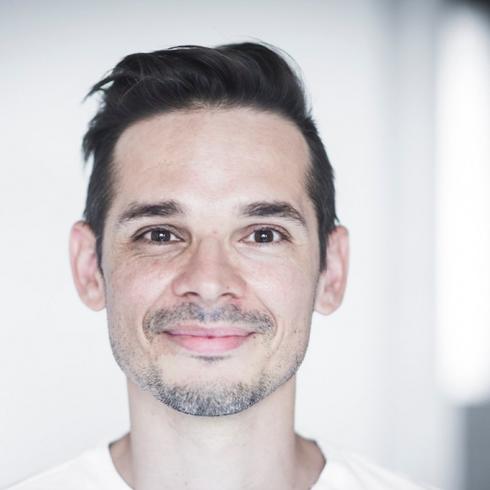
" Standstill "
For harpsichord and orchestra
Bärenreiter
2023 SELECTION
- Nominated for : The Musical Composition Prize 2024
23'
Silence and Worldly Greed
Egg slicers and symphony orchestras have so far belonged to separate worlds. If there is someone who can bring them together, seriously and expanding the horizon, it is Miroslav Srnka. This composer, born in Prague in 1975, whose music is already performed on the most exquisite stages, whose Antarctic opera "South Pole" experienced a sensational premiere at the Bavarian State Opera in Munich in 2016, owes his success not least to the precision and integrity with which he realizes his ideas. Egg slicers, therefore. They belong to the equipment of the musicians playing the violin, viola, and cello, who, together with wind and percussion players, piano, accordion, and, of course, the soloist, premiere "Standstill" at the Cologne Philharmonie, a concerto for harpsichord and orchestra.
In bar 7, when something has already started on the harpsichord, which we don't want to reveal here, the string players do not reach for their bows but for the "harps", or rather the little harps of those "hard-boiled egg cutters" whose retaining shells have been removed. They press them against the sound-amplifying body of their instruments with one corner in such a way that they neither leave scratches nor slip and play arpeggios on the thin, short steel strings. In this way, the orchestra immediately comes closer to the harpsichord, which, compared to a symphonic ensemble, actually has no chance. A sound that Miroslav Srnka imagines as "the rustling of snowflakes" and to which the accordion, vibraphone, and marimba soon join. A soft, distant sound.
And one of peace. "With an all-forgiving peace" stands at the beginning and applies to all 573 bars of the work, which was completed in early 2022. This may come as a surprise when you consider the rapid passages that the harpsichordist is soon required to play: arpeggios, leaps, 32nd-note scales at a tempo of 112, which amounts to 15 notes per second, sometimes coupled with the clarinet and percussion, while up to 35 different string voices, including a meticulously woven fabric, are formed below. But it doesn't get louder than piano, and no drama emerges from the layers and accumulations. When you leaf through the score, they seem to form surfaces rather than movement. Motion becomes static – or rather, standstill.
"A structure can be rich and still contain emptiness," says Miroslav Srnka, "and there can be a silence that is full of content." These poles are organically connected, and the title of the piece is no coincidence with regard to its time of creation. The years of lockdown have shown Srnka "that even a complete shutdown can be something absolutely alive." Stillness is, in a way, also a specialty of the harpsichord. A note is either fully present or not at all, the string is plucked by a quill, and this process cannot be nuanced. "Zero or one, in this sense, the harpsichord is a digital instrument."
The composer was intrigued to make use of the instrument's advantages – the extreme precision, the agile mechanics that make the piano's seem cumbersome, the noisy explosiveness at the beginning of each sound, which the quill sets in motion. "In dense motion, the harpsichord can assert itself well and merge with the orchestra, even blend in."
But only with an orchestra that is attuned to the uniqueness of the harpsichord. No flowing dynamics, hardly any sound pressure, few colors – these are also advantages, rare qualities. Srnka creates that biotope around them, which he likes to see music as: "Something with many different beings that all have to live together. If something pushes forward too much or is forgotten, the balance is broken." This balance, which is existentially threatened in many respects outside the concert hall: that is also a theme of "Standstill". It includes that all participants are allowed to let loose at times. Towards the end, the harpsichord remains silent
for a long time, and the orchestra builds up into stormy structures before the whispering arpeggios of the egg slicers invite the harpsichordist to a solo, cadenza and ending, an unparalleled frenzy lasting several minutes.
Rivals, competitors in the literal sense of "concertare", orchestra and soloist are never. Throughout the piece, they develop an energy together that "can be very strong but is at rest within itself", says the composer. And that's where Anton Bruckner comes into play, whom Miroslav Srnka finds very suitable as a neighbor for Standstill. "Within the so dramatic 19th century, he created pieces that may sound dramatic outwardly but have this calmness within them. This absolute concentration that is not disturbed by any conflict."
[…]
Volker Hagedorn
From the program booklet for "Worldly Greed", Cologne Philharmonie, September 11th-13th, 2022, Mahan Esfahani (harpsichord), Gürzenich Orchestra Cologne, François-Xavier Roth (conductor)

